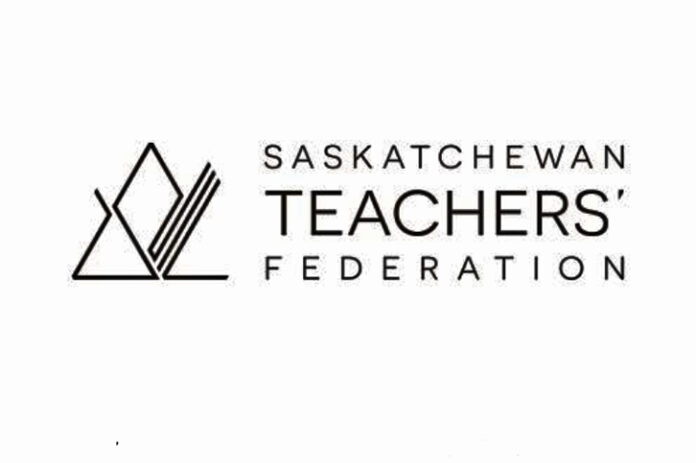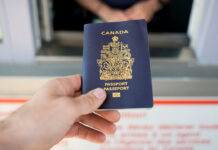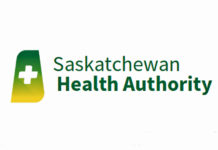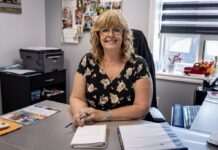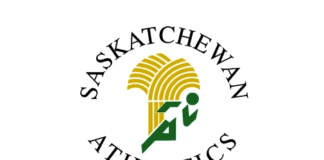The province and the Saskatchewan Teachers’ Federation are at odds over the strategy utilized during the return to in-class learning amidst a growing number of Omicron variant cases.
Students across the province returned to classes as scheduled earlier this week, but the STF had been calling for a two day delay in order to coordinate additional safety protocols.
STF President Patrick Maze said the province has now lost the initial opportunity to implement changes in order to slow the Omicron surge.
“Do we actually know in good faith that on Tuesday morning we can provide a safe learning environment for students. And we didn’t believe that that was a guaranteed yes, and that’s why we thought our province should do, similar to every other province, have some time to assess this,” Maze said during a press conference on Wednesday.
“Unfortunately in Saskatchewan we didn’t do that. And the problem with that is that all students collected on Monday and Tuesday on the first day back and it’s too late now. They’ve all been in contact. Teachers have been potentially exposed.”
“It’s hard to predict what the actual outcome will be, but it’s taking chances with our students and with our staff and we just don’t feel that’s appropriate.”
The STF is now calling for the implementation of new measures to help make schools safer and help in person learning continue, including:
• N95 masks provided for all school staff and students;
• Demanding mandatory masks and proof of vaccination for all activities, including extracurricular;
• To update the definition of “fully vaccinated” to include booster shots;
• Open up booster shot vaccine eligibility for all students turning five this year (born in 2017).
• The immediate reinstatement of the Education Sector Response Planning Team.
The STF is also calling on the province to communicate what the threshold is for moving classes and schools to online learning, what that monitoring process is, as well as providing support to schools to implement these changes.
“It is just a few days into the return to school and we are already hearing of significant challenges in our schools. As Omicron spreads, similar to what we’ve seen in other provinces, the situation is only going to worsen in the coming weeks,” Maze said.
“We’re hearing of some significantly high numbers of schools being impacted,” Maze said. “One school indicated they were down eight staff members. Another school indicated that they were down 16 staff members,” Maze said.
And while the STF is only dealing with anecdotal staffing numbers evidence, because teachers are only required to communicate absences and Omicron cases with their own school divisions, the STF feels the situation is significant in many parts of the province.
“However my understanding is that school divisions are very concerned right now about their ability to continue maintaining in person classes with the shortages that they’re seeing.”
Maze also said that the provincial government’s approach of not implementing community restrictions is sending the wrong message about the impact of Omicron.
“It sends the message that this isn’t serious. This is incredibly serious. Our ability to maintain in person learning – and we’re in favour of keeping in person learning – the business community knows how important that is because our parents of our students are their labour force. So it’s absolutely critical that we continue in person learning.”
Education Minister Dustin Duncan, during a COVID update on Wednesday morning, expressed his feeling that schools should be the last to close and the first to open because of the importance of in class learning to students.
“We heard their call for a two day pause. Working with School Divisions and administrators who operate the schools across the province didn’t feel like a two day pause to the resumption of school beginning this week would have provided a value or benefit,” Duncan said of the STF request.
“I think everybody is aware of what we are dealing with and the layered approach that’s been put in place.”
“We are confident that our plans are in place, and that nothing really would change in those two days in the event that we did take the STF up on their offer of delaying school for two days. We’re comfortable with that. We’re confident that schools can return, with the understanding that what we’re dealing with in terms of this variant and likely there will be at some point disruptions in individual classrooms and individual schools. But that would be the case whether a school started on Monday or whether it starts today.”
Duncan stressed that the utilization of rapid test kits will be a key plank in their layered mitigation approach, along side masking, cohorting of students, and encouraging sick students and teachers to stay home.
Positive COVID-19 test results for staff or students, from either rapid antigen or PCR tests, must be reported to the local school office. The school will then send a notification to parents/guardians of the class and/or bus cohort that may be considered close contacts. Individuals no longer require a confirmatory PCR test following a positive rapid antigen test, and schools are updating their process for notifying close contacts of cases, with an aim to ensure that there continues to be timely notification.
Duncan noted health officials are working closely with the education system to monitor cases and the potential exists for more stringent measures as the impact of Omicron is measured.
“I think we’re trying to weigh a number of considerations and balance our approach as we look to return students this week to the classroom,” Duncan said.
“It’s not to say that we won’t have disruptions in the classroom in the coming weeks and months as we make our way through this wave of Omicron. But the question really was do we require 188,000 students to start the school year on January 3 at home and for what period of time?”
“We felt that we could safely bring students back knowing that there likely will be disruption. We have put in place, working with School Divisions across the province, put in place a layered approach to mitigate as much of the risk of transmission as possible within the schools.”
“We felt like we were in a position where we could safely restart school for students in class learning. We know that in class learning is vital for the not only educational but the social development of a student. Particularly as we are, as we know, in the third school year for many of our students dealing with COVID 19.”
“We may have to change course, as we have all along, and classrooms and school may need to pivot and to change to a different direction. But we felt we were in a good position to start this post winter holiday break with as many students as possible in the classroom.”


